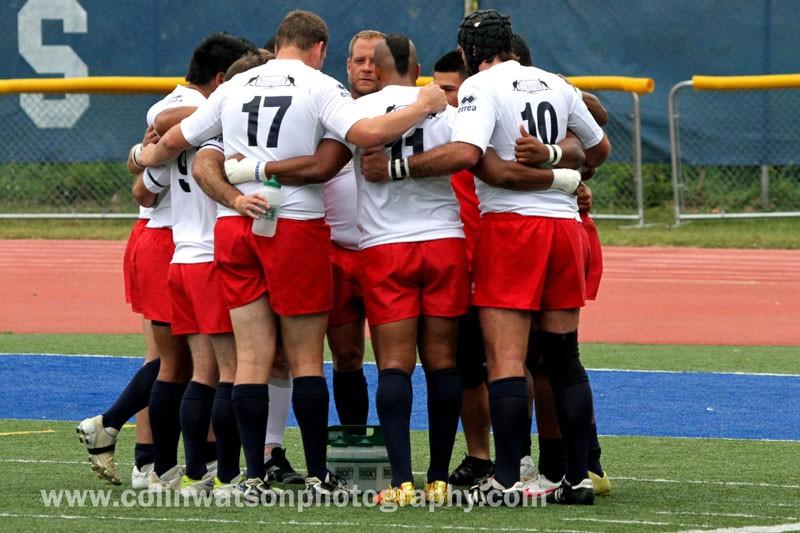On Sept. 31, rugby fans packed into the Staples Stadium bleachers to watch the U.S. national rugby league team, the USA Tomahawks, battle their rival, Canada.
“To have a national sports team come to play locally is an awesome experience,” said Jackson Yang ’13, a Staples rugby co-captain. “The fact that it was rugby made it even cooler for me and the other members of the team that attended. “The globally-ranked team came to Staples for the Colonial Cup, a fierce competition between the U.S. and Canada. The Tomahawks won home field privileges for the game after defeating Canada by a score of 34-20 on aggregate in the 2011 Colonial Cup.
Staples was officially decided as the venue when athletic director Marty Lisevick got a request from Parks and Recreation through the Staples rugby coaches. Lisevick felt that the game would be a great opportunity for Staples students as well as future players to see high level rugby.
The Tomahawks defeated the Canada Wolverines 36-14 and clinched the 2012 Colonial Cup. Their performance inspired Staples rugby players who were at the game.
“Having these athletes come to Staples to represent our country gave me hope for opportunities on a national level,” said Tim Schroeder ’14.
The Tomahawks found Westport thanks to their Strength and Conditioning Coach and Fairfield resident, Ben Kelly, who owns a gym in the area. “Creating exposure for ourgreat sport in Fairfield county was the catalyst for hosting here,” said Kelly.
Over 300 spectators crammed into the bleachers to watch the game take place, an exciting turnout for a sport that has often gone unrecognized in the area.
“It stirred up some more attention within Westport than thesport is used to garnering,” said Yang. “Usually it gets overshadowed by more American sports, but it has definitely been growing in recent years.”
According to the Interna–tional Rugby Board, global participation in the sport has increased 19% since the Rugby World Cup in 2007. In the United States, there has been a 350% participation increase since 2004.
Kelly attributes this growth to colleges such as UC Berkeley offering rugby scholarships as well as the sport’s inclusion in the 2016 Olympics.
Staples co-captain Matt Cozzi ’13 has seen the growth at Staples alone, saying that 15-25 more players were coming out for the team this year than in his freshman year.
“I really feel its mostly because Coach Barahona has done a great job in improving the work ethic of the players and building us up to a Division 1 high school team,” said Cozzi.
Although the Staples players were thrilled by the game, the Tomahawks play a different kind of rugby than do high schools and colleges across the country.
The Tomahawks play league rugby, while Staples plays union rugby. League differs from union by having 13 players per side instead of 15, and it also has a system of limited tackles similar to those in football. Rugby union has also maintained the use of scrums, where rugby league does not.
Despite the differences, the team was able to find common ground and learn some valuable lessons about communication and strategy from the Tomahawks.
“Our players were amazed at how well the team could run plays and how comfortable they felt out there,” said Cozzi. “This really showed the guys the value of working hard and how it can pay off in the long run.”
Cozzi also noted the similarity of speed in Staples and Tomahawk players. saying that watching The Tomohawks showcasing their speed was really helpful in giving Staples players different ideas of how to use the fast players from Staples, Cozzi said Kelly maintains that rugby is an extremely physical sport and a sport full of rich life lessons, and believes it deserves the attention it is starting to receive.
The Tomahawks specifically are looking towards their own exciting future, as they recently qualified for the 2013 World Cup next fall in England and France. The team hopes to return to Staples while preparing for the event.
“The players really enjoyed the hospitality of Staples high school and Westport,” said Kelly. “I would like Staples to be the home venue for the USA training camps. The future looks very bright.”













































